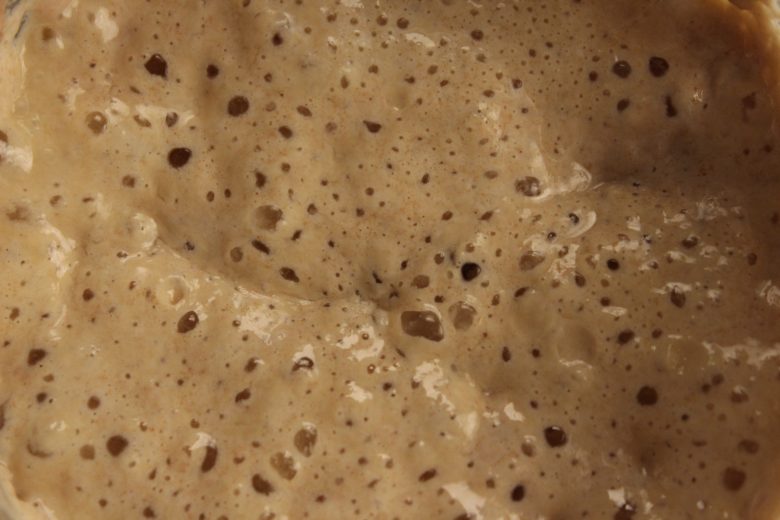Starter
As a rule, part of the matured sourdough is used as a starter for the sourdough. This is taken from the mature full sour. Lactic and acetic acid bacteria and yeasts have developed particularly well in the mature full acid.
The amount of starter to be used is different for the individual sourdough guides. It amounts to 1-20% of the amount of flour to be acidified. While 1% of the flour to be soured is sufficient for a three-step process, 2-20% is required for a single-step process, for example.
When removing a piece of starter from a mature sourdough it is important to be aware of the following:
If the further processing of the starter to be used does not take longer than 6 hours, no specific storage is necessary. If the starter is stored for a longer period, it should be cooled to 8°C and a hydration (TA) of 90% (190) should be targeted.
The storage in the refrigerator ensures the preservation of the starter. From this it can be ensured that the starter can be refreshed after several days of storage.
The Starting Phase
The starting conditions are particularly important when making sourdough. At sourdough temperatures below 20°C, the increase in acidity is considerably delayed or largely ceased. Temperatures below 20°C are therefore not recommended.
The initial temperature determines the rate of acidity and the orientation of the taste, in harmony with the amount of starter to be used and the firmness of the sourdough.
- “Mildly sour” by higher sourdough temperatures
- “Robustly sour” by lower temperatures
Sometimes it can (will) happen that the sourdough loses strength. You can feed a weak starter with wholegrain flour. Wholegrain flour contains more minerals from the grain than lighter flours.
To feed, you simply exchange half of the flour for wholegrain flour. Repeat the process again after 10 hours, and continue until the strength is restored..
Attention: The wholegrain flour will also absorb more water!


